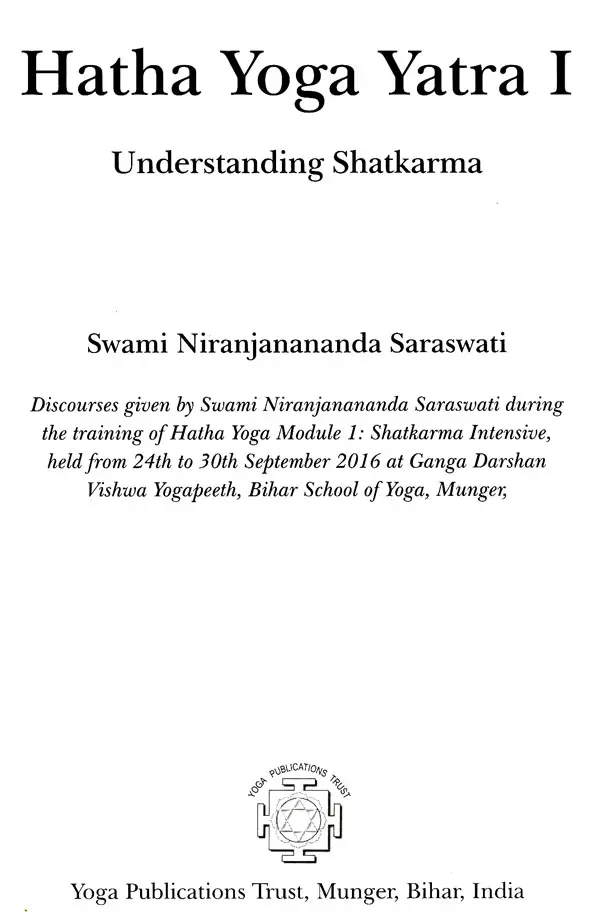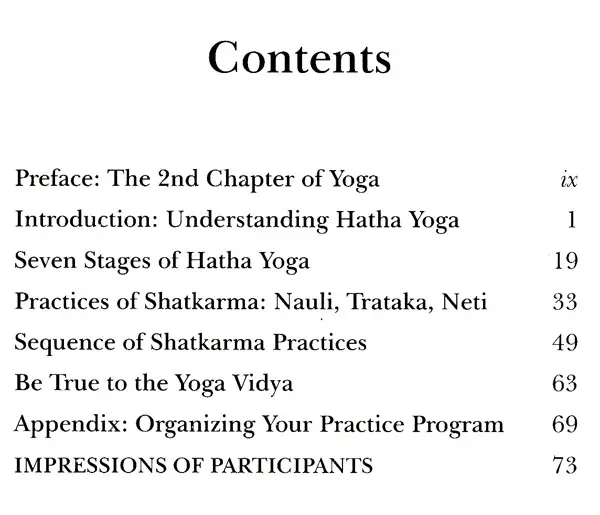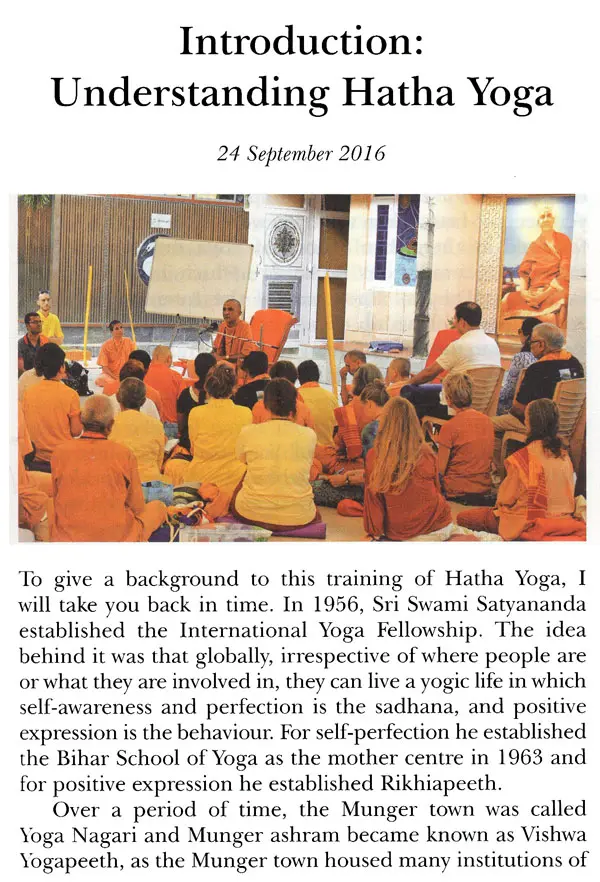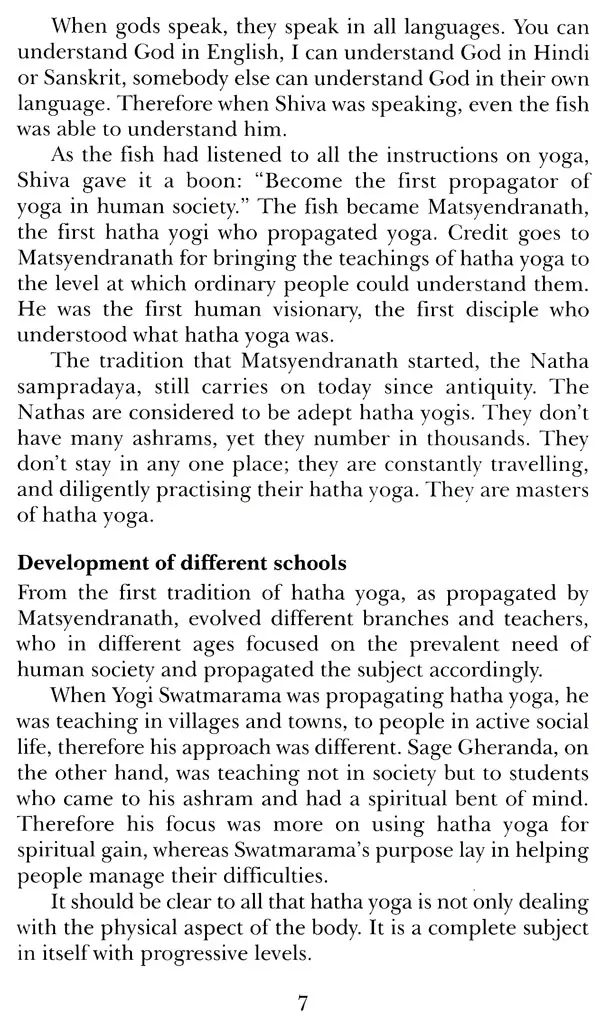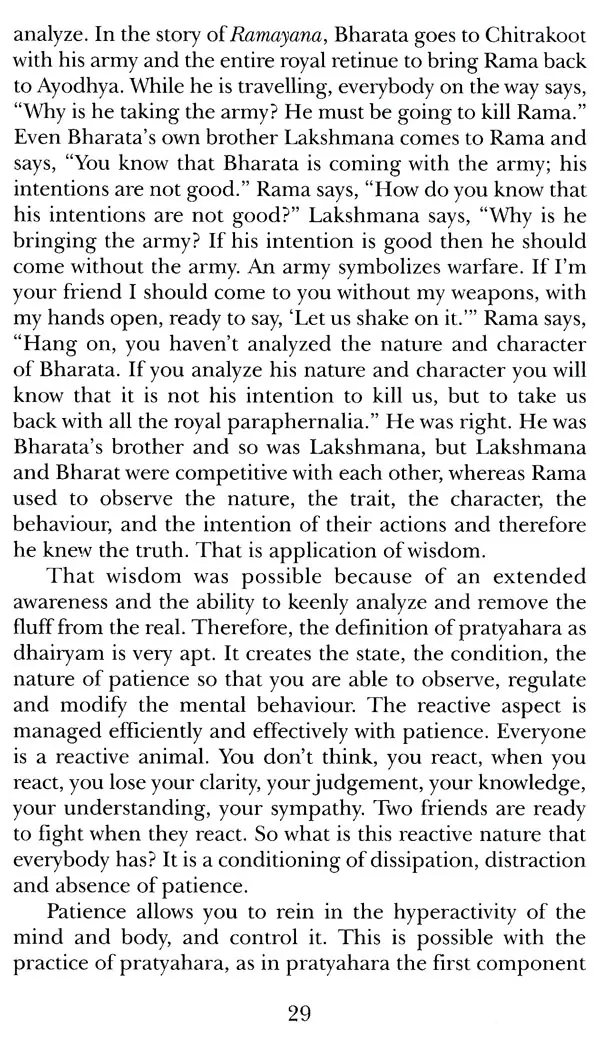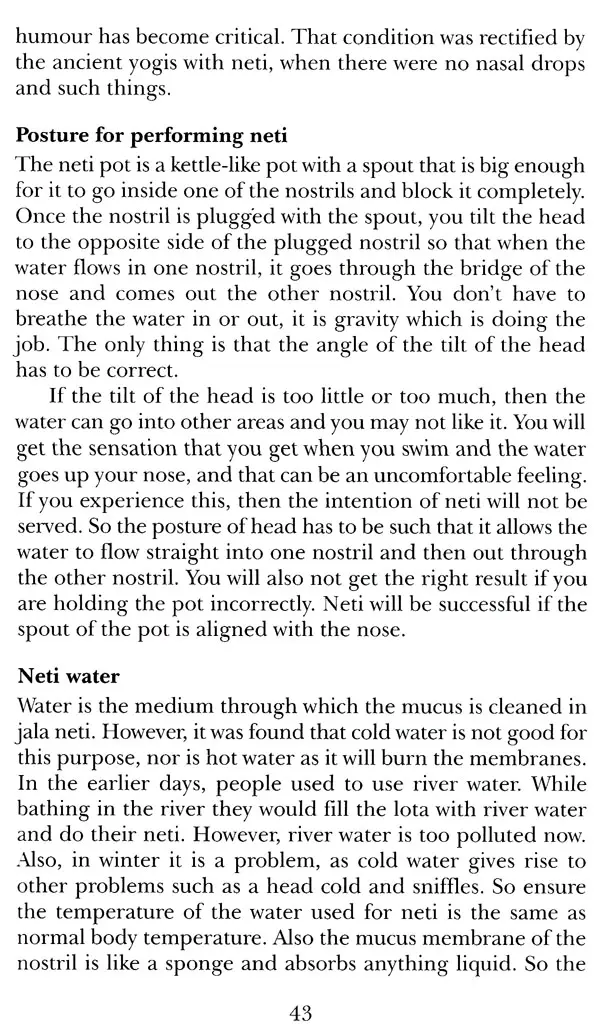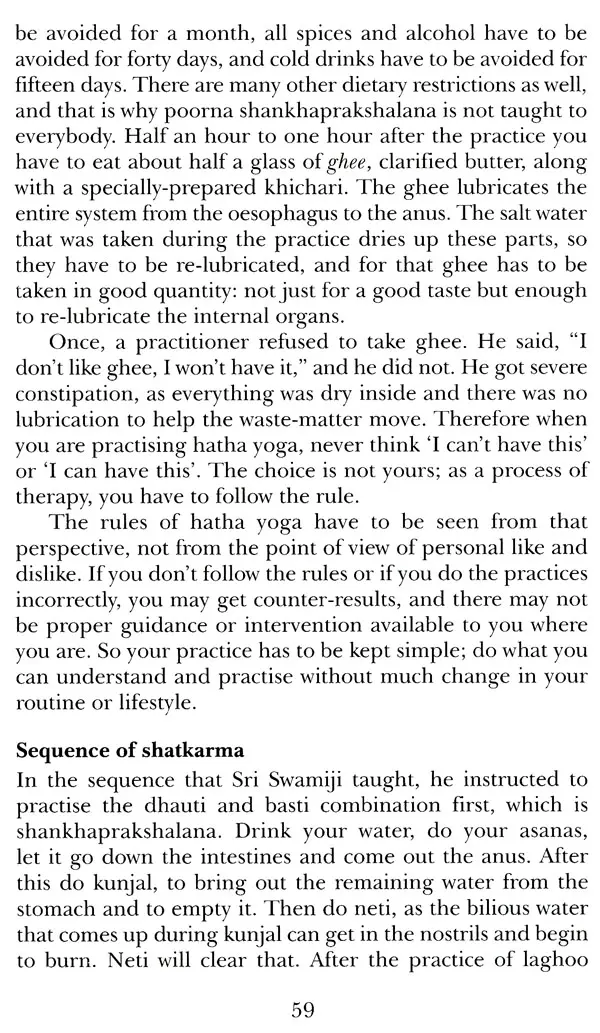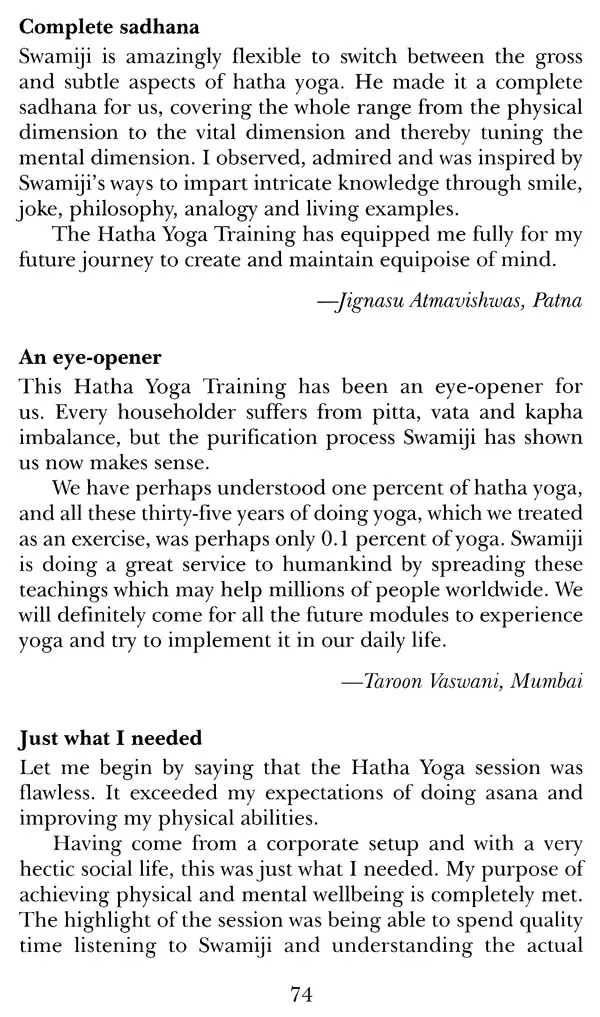
Hatha Yoga Yatra 1: Understanding Shatkarma
Book Specification
| Item Code: | UAO602 |
| Author: | Swami Niranjanananda Saraswati |
| Publisher: | Yoga Publications Trust |
| Language: | English |
| Edition: | 2017 |
| ISBN: | 9789384753351 |
| Pages: | 78 |
| Cover: | PAPERBACK |
| Other Details | 8.50 X 5.50 inch |
| Weight | 130 gm |
Book Description
In writing the second chapter, a complete change in the training programs at Ganga Darshan Vishwa Yogapeeth has come about since 2016. The new programs are setting a standard of understanding the practices and principles of yoga from the perspective of the original intentions of yoga.
Among these programs was Hatha Yoga Module 1: Shatkarma Intensive, during which the focus was on understanding and applying the first stage of hatha yoga: shotkarma, or the six purificatory actions During the program, the practice, experience and understanding of this most preliminary stage of yoga through which purification at the physical level takes place, was taken to a different dimension altogether.
This book presents the satsangs given by Swami Niranjanananda during the program.
He returned to India in 1983 to guide the activities of Bihar School of Yoga Sivananda Math and Yoga Research Foundation at Ganga Darshan In 1990 he was initiated as a paramahamsa sannyasin and in 1995 anointed spiritual preceptor in succession to Swami Satyananda Saraswati. He established Bihar Yoga Bharate the first university of yoga in 1994, Yoga Publications Trust in 2000, and a children's yoga move ment, Bal Yoga Mitra Mandal, in 1995. He travelled extensively to guide seekers around the world until 2009, when he received the command to commence a new phase of sannyasa life.
In 2010, he established Sannyasa Peeth, to enable seekers to experi ence the spiritual and cultural traditions of India in their essence. The year marked his entry into a phase of higher sadhana and tirtha vatra.
In 2013, he conducted the World Yoga Convention in Munger to celebrate the golden jubilee of the Bihar School of Yoga, and launched a new era of yogic renaissance. In 2013 he also commenced the arduous panchani sadhana. In 2014, he embarked on a Bharat Yatra, an all-India four, transmitting the gift of yoga to all. Since then, Swami Nirartian has been working to develop the next stage of yogic training and teaching, and has initiated several programs to help people deepen their experience of yoga and imbibe the traditional wisdom Simultaneously, he has revived various ancient knowledge systems and practices of India.
Author of many classic books on yoga and other spiritual streams, Swami Niranjan is a magnetic source of wisdom on all aspects of yogic philosophy, practice and lifestyle. He ably combines tradition with mo demity as he continues to work for his guru's mission.
When the Bihar School of Yoga was established, the philo sophy, practices, applications and lifestyle of yoga as practical and scientific systems were unknown, even in Indian society. From the beginning, yoga training and propagation by the Bihar School of Yoga took the form of intensive residential programs, in which yoga was taught as a way to qualitatively enhance physical health, mental peace, emotional harmony. A sequence of progression in yoga was defined fifty years ago by Swami Satyananda, by giving systematic training first in hatha yoga, raja yoga, and kriya yoga, as bahiranga yoga, external yoga. Simultaneously, training in antaranga, internal, aspect of karma yoga, bhakti and jnana yoga was provided through the lifestyle and inspiration of the ashram environment. A holistic or integral yoga system developed in which the yoga aspirant could awaken and integrate the faculties of head, heart and hands. The different ange, limbs, of yoga become the ma of attaining this personal harmony and integrated expression.
In the early 1940s, the subject of yoga was propagated across the world by teachers and masters of dillesen traditions, introducing the idea that through the practice of yoga one could explore the body, mind, emotions, and have a glimpse into one's spiritual nature. The first-generation teachers focused on bringing the knowledge of yoga to human society according to the need of the society at that time. In the 1960s, yoga was seen as a physical culture. In the 1970s, it was seen as a way to overcome stress, anxiety, tension and to improve the physical and mental functions. In the 1980s, research into the various possibilities and potentials of yoga to assist and promote physical and mental health took the forefront. By the 1990s, a rapid increase in the popularity of the practice of asana was evident across the globe. The asana component of yoga had been accepted worldwide and other components of yoga were relegated to the background and largely ignored by the mainstream practitioners and majority of yoga teachers. Today, 28 million people are practising yoga in the United States alone and statistics estimate 300 million practitioners worldwide.
In 2013, the World Yoga Convention was conducted in Munger to celebrate the Golden Jubilee of the Bihar School of Yoga. Over 50,000 yoga practitioners, teachers, students and aspirants participated in this historic event either in person or through the internet. The Convention was a milestone that marked the completion of fifty years of yoga. propagation. The mandate of taking yoga from shore to shore and door to door was fulfilled. Over a fifty-year period, with the help of yoga aspirants and well-wishers all over the world, a yogic renaissance had taken place. The chapter of yoga propagation was complete and when one chapter closed, the next chapter opened.
The World Yoga Convention also heralded the beginning of the second chapter of the Bihar School of Yoga.
**Contents and Sample Pages**
